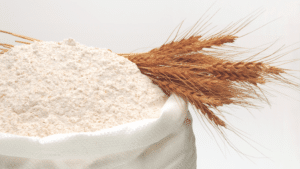
Plant Breeding in Canada
It’s been almost 110 years since a small group of pioneers conceived a plan for seed competitions, which grew into the Canadian Seed Growers’ Association. Their objective was to improve crop production through the selection of increasingly superior varieties. Canadian plant breeders have been essential to meeting that objective ever since.
Not just seed growers, nor just the agri-food sector have benefited from the creative contributions of Canadian plant breeders. Their contributions have benefited all Canadians. Few advances in agricultural production have contributed more to our present level of productivity than the new varieties and genetic potential developed by plant breeders. Without the improved yields and adaptations of new varieties, agriculture could not provide the abundant supply of affordable food that Canadians consume, or the food exports that Canadian farmers contribute to a growing global population.
In the 1800s, Canadian pioneers brought seed with them from their parents’ farms in Europe. The most widely used seed identified by variety name was Red Fife wheat. Red Fife came from Eastern Europe via Scotland, where it was improved and renamed by David Fife, a pioneering seed plot producer. The first Canadian-bred variety was developed in 1904, when Dr. Saunders at the Ottawa Experimental Farm of the Department of Agriculture made a final selection from several lines of hard, red spring wheat and called the selected variety Marquis.
The first distribution of seed to farmers was in 1909 and, with consistently good yields, Marquis soon became the dominant variety of spring wheat in Western Canada and the United States. In the absence of modern laboratory techniques, Saunders confirmed that Marquis had good bread quality by conducting a chewing test. His low-tech quality appraisal was validated by the fact that Marquis served, for several succeeding decades in both Canada and the United States, as the standard for baking quality used to assess new wheat varieties.
Today, plant breeding and seed research employ over 3,000 Canadians and contribute more than $360 million per year to the Canadian economy. Each year, to continue ensuring that new varietal identities are preserved in certified seed, CSGA relies on at least 360 recognized plant breeders to produce almost 1,000 breeder status plots. Breeder seed from these plots provides the original parent seed for subsequent pedigreed generations (such as select, foundation and registered). The pedigreed generations are multiplied to produce certified seed, which is planted to produce commercial crops.
The genetic identity of new varieties, carefully selected by plant breeders, transfers new agronomic or nutritional characteristics to farmers, and eventually to consumers. But that genetic identity cannot always be visually verified, so most seed-producing countries have national legislation requiring officially-regulated varietal certification systems to help preserve varietal identity. In Canada, this system involves CSGA crop certification, including the professional recognition of plant breeders, along with the overall authority for seed certification and enforcement by the Canadian Food Inspection Agency. These requirements support reliable production of quality-assured grains and oilseeds for both domestic and export markets.
Like our pioneer ancestors, most governments have recognized long ago the national economic impact of ensuring their farmers are planting seeds of the most improved, adapted varieties that plant breeders have developed. To that, we tip our hats to the dedication of our Canadian plant breeders and to the creative thinking they display in their work.













